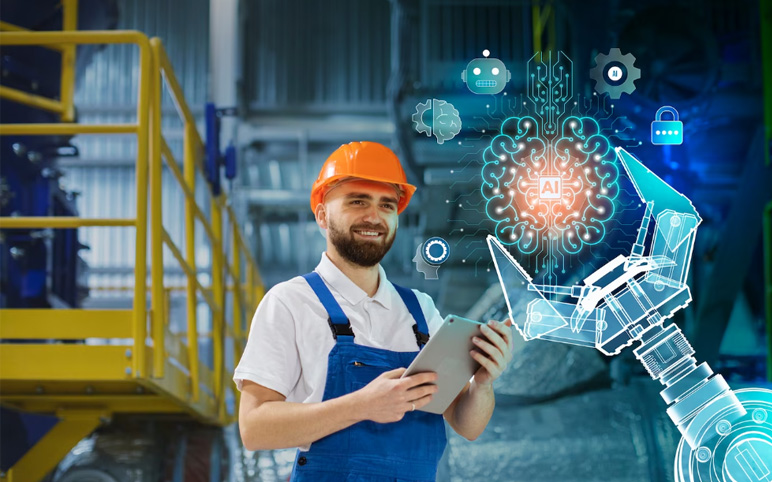The impact of artificial intelligence (AI)
on the job market is one of the most pressing and controversial topics in the
current socio-economic discourse. The rapid advancement in AI technologies has
sparked a wide array of debates, concerns, and expectations regarding the
future of work. In this review, we will explore the multifaceted effects of AI
on job markets, dissecting both the opportunities and the challenges it
presents.
Technological Disruption in Historical Context
To contextualize the present situation, it
is essential to consider the historical precedents of technological
disruptions. The industrial revolutions of the past brought about significant
changes in employment patterns. Jobs were lost to new machines, but new types
of jobs also emerged, often in greater numbers. The consensus among economists
is that technology ultimately creates more employment opportunities than it
destroys, but the transition can be painful for those whose skills become
obsolete.
In the age of AI, this historical trend
faces an unprecedented challenge. AI is not just another tool; it is a
fundamentally different kind of technology that can learn, adapt, and
potentially outperform humans in a growing number of cognitive tasks.
Job Market Polarization
AI’s impact on job markets is not uniform.
There is a growing body of evidence suggesting that job market polarization is
occurring, with middle-skill jobs being the most susceptible to automation. AI
and machine learning technologies have the potential to automate routine
cognitive tasks—such as data entry, basic customer service, and simple
decision-making processes—that constitute a large portion of middle-skill jobs.
This can lead to a hollowing-out effect, where low-skill, low-pay jobs and
high-skill, high-pay jobs grow in number, while middle-skill, middle-pay jobs
decline.
The Rise of New Occupations
Conversely, AI also creates new categories of jobs. Roles in AI ethics, machine learning engineering, data science, and AI maintenance and improvement have seen a dramatic increase. Furthermore, as AI systems become more prevalent, there will be a growing demand for professionals to manage, interpret, and provide oversight for these systems.
Moreover, AI is expected to enhance human
productivity in many existing roles, leading to job evolution rather than
elimination. For example, AI can aid doctors with diagnostics, allowing them to
focus more on patient care. This synergistic relationship between AI tools and
professionals can lead to higher quality services and new business models.
The Skills Gap
The displacement of jobs due to AI is often
discussed in tandem with the skills gap. As AI and automation technologies
advance, there is a growing demand for workers with skills that match the needs
of the new job market. This includes not only technical skills to build and
maintain AI systems but also higher-level cognitive skills such as creativity,
complex problem-solving, and emotional intelligence—areas where humans still
have the edge over machines.
The skills gap presents a significant
challenge for both workers and employers. Workers need to engage in lifelong
learning to stay relevant, and employers need to invest in training and
development to maintain a skilled workforce. Governments and educational
institutions play a critical role in facilitating this transition, by
reformulating educational curricula and providing retraining programs.
Acceleration of Job Displacement
One of the most immediate concerns about
the impact of AI on the job market is the speed at which it can lead to job
displacement. Unlike previous industrial revolutions where transitions occurred
over generations, AI is catalyzing changes at a much faster pace. This
acceleration is due in part to the exponential growth of computing power and
the globalized nature of innovation and competition.
The speed of displacement creates social
and economic pressures, as workers may find themselves with obsolete skills
much faster than they can retrain or upskill. For instance, AI applications in
sectors like finance have automated tasks that were once the mainstay of
entry-level positions, such as basic analysis and portfolio management. These
rapid changes can result in a mismatch between the current workforce's skills
and the new skills demanded by the market, leading to structural unemployment.
The impact is not limited to low-skill jobs either; high-skill professions are not immune. For example, legal research, language translation, and even certain aspects of medical diagnosis are increasingly automated by sophisticated AI algorithms, outpacing the ability of professionals in these fields to adapt.
Shift in Demand for Different Types of Labor
As AI continues to advance, there is a
shift in the demand for different types of labor, especially in favor of those
with high digital literacy and proficiency in new technologies. This shift
reflects the changing nature of tasks within jobs. Routine tasks are
increasingly automated, while non-routine tasks, especially those requiring
social intelligence, complex problem-solving, and creative abilities, remain
largely the domain of human workers.
AI-driven technologies favor a skill set
that includes expertise in software development, data analytics, and the
ability to work synergistically with AI. The labor market, therefore, sees a
rise in demand for workers who can complement AI systems. Simultaneously, there
is a reduced demand for jobs that AI can perform more efficiently, often those
involving repetitive or predictable tasks.
This shift also signifies a movement away
from sector-based to role-based changes. AI doesn't only affect manufacturing
jobs, as seen in past technological shifts but permeates into every sector
including services, healthcare, and education, transforming the nature of jobs
within these areas. As such, it calls for a reevaluation of job roles across
the board, and for a redefinition of career paths that were once considered
secure and linear.
To foster inclusive growth, policymakers
need to design strategies that ensure the benefits of AI are widely
distributed. This could involve social safety nets for displaced workers,
incentives for companies to invest in human capital, and regulations to prevent
discriminatory practices by AI systems in hiring and management.
The Future of Work
As AI continues to evolve, the future of
work looks increasingly complex. Some futurists predict a world where work as
we know it is drastically reduced, with AI handling most tasks, leading to
discussions around universal basic income and the redefinition of social
contracts. Others envision a future where AI and humans coexist in the
workplace, with AI handling routine tasks and humans engaging in tasks that
require a personal touch, judgement, and creativity.
The future will likely lie somewhere between these extremes. AI’s impact will be felt differently across industries, with some, like transportation and manufacturing, facing more immediate and profound changes than others.
Regulatory Frameworks
The pace at which AI is advancing poses a
challenge for regulatory frameworks, which are often slow to adapt to
technological change. Regulations will need to balance the promotion of
innovation with the protection of workers’ rights and interests. This includes
considerations of privacy, transparency in AI decision-making, and the
establishment of ethical guidelines for the development and use of AI
technologies.
Conclusion
The impact of AI on the job market is
complex and multifaceted, presenting both significant challenges and
opportunities. While the fear of job displacement is legitimate, history shows
us that technology can be a net creator of jobs. The key lies in managing the
transition—reskilling the workforce, fostering a culture of lifelong learning,
and ensuring that growth is inclusive.
AI’s evolution will undoubtedly continue to
shape the job markets in unexpected ways, demanding agility and foresight from
all stakeholders involved. A proactive and collaborative approach among
governments, educational institutions, businesses, and workers is essential to
harness the potential of AI while mitigating its risks. It is clear that the
narrative of AI and the future of work is still being written, and the outcomes
will largely depend on the actions we take today to prepare for the transformations
of tomorrow.
Harnessing the Power of Diverse Global Insights and Revolutionary Research Techniques
At Astute Connect, we pride ourselves on our global market research teams, whose diverse expertise spans continents and industries. Our innovative methodologies and unique perspectives converge to deliver bespoke solutions, tailored to meet every nuance of your business needs, ensuring not just growth, but a trajectory towards industry leadership
Contact Us
.png)

